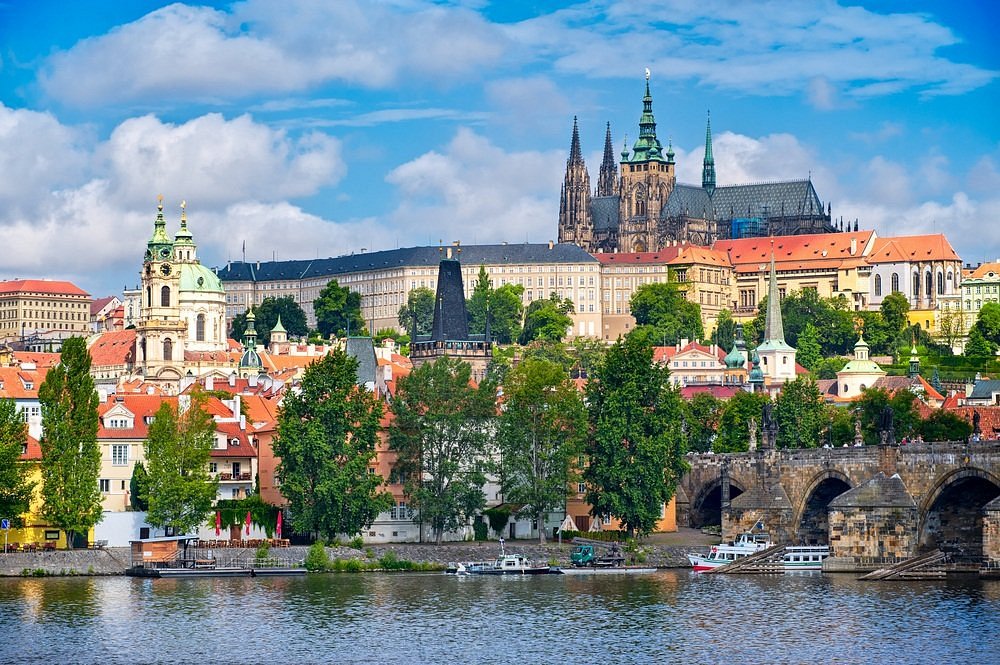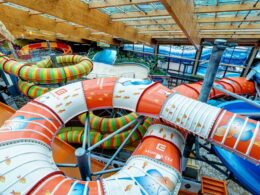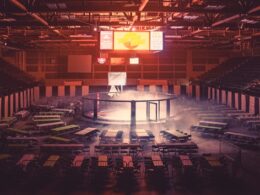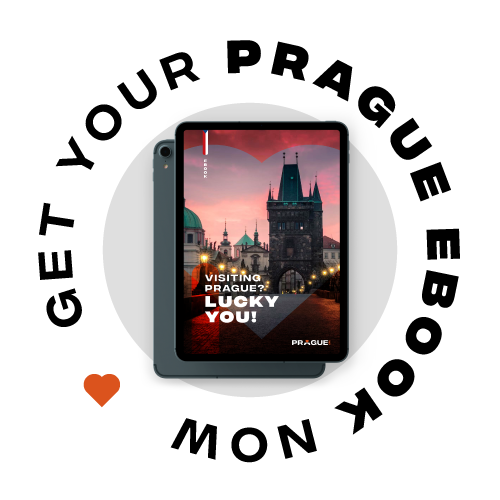Table of contents Show
Explore the enchanting Prague Castle, the largest ancient castle in the world, where you can stroll through the royal garden, visit the Basilica of St. Peter, and appreciate the grandeur of the Spanish Hall.
Unveiling the Magnitude: How Big is Prague Castle?
The Prague Castle (Pražský Hrad) is the most unique Czech structure and a very important cultural sight in the Czech Republic. The Castle is considered the largest coherent castle in the world and has an area of almost 70,000 meters. The UNESCO World Heritage site consists of many palaces and ecclesiastical buildings of different architectural styles. It is an awesome sight to see the remains of Romanesque-style buildings to Gothic modification. The most extensive renovations of the castle were undertaken from 1918-1938, and since the Velvet Revolution, the Prague Castle has undergone significant repairs.
With its origins tracing back to the 9th century, this sprawling fortress has witnessed the comings and goings of emperors, kings, and the everyday lives of the people it watches over. It was within the shadow of St. Vitus Cathedral, nestled within the castle’s walls, that young Franz Kafka found solace, inspiration, and perhaps even a touch of the surrealism that would later define his literary masterpieces. The castle’s grounds have echoed with the footsteps of Holy Roman Emperors and have been a canvas for the grand ceremonies that marked their reigns.
The courtyards of Prague Castle, a central part of the complex, offer a remarkable journey through history. The castle has three main courtyards, each with its own unique atmosphere and historical significance. The First Courtyard serves as the ceremonial entrance and is often the stage for official state events and military parades. The Second Courtyard is home to the Chapel of the Holy Cross and the magnificent Baroque Kohl’s Fountain, adding a touch of elegance to the castle’s robust architecture. The Third Courtyard, perhaps the most significant, houses the St. Vitus Cathedral, the Old Royal Palace, and other historical buildings. Each courtyard connects visitors to the rich legacy and grandeur of the castle, making a visit to Prague Castle a truly immersive experience.
Experience the ultimate luxury living in the heart of Prague with exquisite Prague Castle apartment rentals.
Location of the Prague Caste & How to Get There
The Prague Castle (or Pražský hrad) is not just one building. Many buildings with magnificent views over the Vitava River and Charles Bridge make up the Castle complex, and the entire complex is located within the historical center of Prague. Don’t miss seeing Prague’s heritage in the Old City with its collection of lovely church spires.
The access to the castle complex is not difficult to follow. It is the largest building in the elegant city of Prague, and there are various tram stops near the Castle, Prálovský letohrádek, Pražský hrad, and Pohořelec. You can also get to the castle from the Malostranská or Hradčanská metro stations. Most visitors use tram No. 22 at Pražský hrad. When leaving the castle, visitors go through to the Old Castle Stairs to metro station Malostranská.

Prazsky Hrad Opening Hours & Entry
- Summer Tourist Season (April 1 till October 31)
The Castle complex includes the Old Royal Palace, St. George’s Basilica, Golden Lane and Daliborka Tower, and St. Vitus Cathedral.
Price: 6.00 22.00
Monday – Saturday from 9.00 am to 17.00 (5:00 pm) and Sunday from 12.00 to 17.00 (5:00 pm.)
Great South Tower of St. Vitus Cathedral
10.00 – 18.00 (6:00 pm)
Exhibition Halls
10.00 – 18.00 (6:00 pm)
Theresian Wing, Prague Castle Riding School, Imperial Stables, and Royal Summer Palace.
10.00 – 18.00 (6:00 pm)
The Garden on the Bastion
Entry Fee: 6.00 – 22.00
Château Park in Lány:
Wednesday and Thursday 12.00 – 18.00 (4:00 pm)
Public holidays and weekends 10.00 – 18.00 (4:00 pm)
2. Winter Tourist Season (November 1 till March 31)
Castle complex
6.00 22.00
Historical buildings
9.00 – 16.00
St. Vitus Cathedral, Old Royal Palace, Golden Lane, Daliborka Tower, St. George’s Basilica
Monday Saturday 9.00 – 16.00; Sunday: 12.00 16.00
Exhibition “St. Vitus Cathedral Treasures“
10.00 – 17.00
Great South Tower of St. Vitus Cathedral and Exhibition Halls, Prague Castle Riding School, Imperial Stables, Theresian Wing, Royal Summer Palace
10.00- 18.00 (6:00 pm)
What to Do & What to See at the Prague Castle
The first place you must visit is The Old Royal Palace. The palace was first built in the 9th century, but the current building is also part of Emperor Charles IV’s 16th-century Gothic palace. Wenceslas added further extensions to the palace, but you must see Vladislav Hall, a splendid 16th-century hall. This gigantic structure held magnificent coronations, hectic and colorful markets, banquets, and jousting matches. There is an Observation Galley overlooking the palace gardens, and you cannot miss seeing the Riders’ Staircase. This amazing feat of architecture was built for knights in all their glory to ride to the tournaments held in the hall on their horses.
St. Vitus Cathedral is the Czech Republic’s greatest Christian building, and the second site you must visit. St. Vitus Cathedral holds the offices of the Archbishop of Prague, and here you can visit the burial tombs of past Bohemian kings, and revered saints. A Romanesque rotunda from AD925 is the base of St. Vitus. St. Vitus itself was started in 1344, but because devastating plagues and wars, 525 years passed before St. Vitus was completed. St. Vitus is an diverse mix of modern NeoGothic, plus 14th century Gothic agriculture with a mix of Renaissance and Baroque influences.
The stores of the Last Judgment and the Holy Trinity are depicted in stained glass windows throughout the castle. This artwork is reported to be from 1370 and is just above the Golden Portal. You cannot miss St. Wenceslas Chapel, containing a jewel-encrusted altar and several paintings produced in from the 14th to the 16th centuries.
The third must-see site is the Treasury. The lookout gallery, plus priceless artifacts dating back to the Middle Ages, reside in the South Tower which looks out on the city of Prague.
Loreta church is notable for its impressive façade and interior decoration, including frescoes, sculptures, and paintings by prominent Baroque artists. It is a popular destination for both tourists and locals, and it is especially popular during religious holidays and pilgrimages.
Do not miss walking through the Castle’s history and gazing at magnificent depictions of the story of this immense castle in exhibits that are on display at the Old Royal Palace. The exhibits detail the castle’s rich 1,000-year history and outline the past and present of the Czech people. Also, you can see exhibits of those who shaped the Czech history, including rich arts and inspired writers, and the history of the craftsman who built Prague.
Take advantage of sightseeing tours. The 3.5-hour walking tour of the inside of the Prague Castle will provide you insights on historical happenings. Take the 1.5 hours castle tour at Night and see wonderful illuminations, no crowds, and access to old prison cells, plus storage and ammunition rooms. Do not forget to watch the intricate movements of the Palace guard as they make their daily changes. Guard changes at the Prague Castle are definitely an interesting thing to see.
Unlock the secrets of Prague’s most iconic landmark with the skip-the-line Prague Castle tickets.

History of the Prague Castle
The Prague Castle complex is huge and includes an area of 753,474 square feet. The complex runs down to the Lesser Quarter (Malá Strana), where several chateaux and palaces are found. Wallenstein Palace, home to the Czech Senate, is located in the castle and includes 26 other houses and six gardens.
The ancient Castle has an intriguing history that begins in 880 with Prince Bořivoj and the construction of the Church of the Virgin Mary. The early castle was built with a moat and stone clay rampart. Churches like St. Vitus and St. George were built in the 10th century.
In 1541, a fire destroyed parts of the Prague Castle, and under the Habsburgs, buildings in the Renaissance style were added. The Third Defenestration of Prague in 1618 again damaged the castle, and the Swedes looted many artworks in the Battle of Prague, 1648, the final chapter of the Thirty Years’ War.
Built in the last years of the 16th century, alchemists lived in Golden Lane and tried to turn metal into gold.
In the 16th century, Rudolf II built a garden of tropical plants, including citrus trees. A tubular-shaped glass-enclosed greenhouse was built in 1999.
In 1618 the word defenestration was again invoked at the castle. Two Catholic regents were found guilty of violating religious freedom. These gentlemen were shoved out the window. Fortunately, they had a soft landing and survived.
The last major rebuilding of the Prague Castle began in the second half of the 18th century by Empress Maria Theresa, and in 1848 when Franz Joseph abdicated, Ferdinand I move into the Castle.
In the Vitus Cathedral, the Bohemian Crown Jewels, including the St. Wenceslas crown royal scepter and a coronation cloak, are stored behind a chamber door with seven locks. The keys to these locks are held by the President, Prime Minister, Prague Archbishop, and four other officials. The jewels do go on exhibit every five years.
In 1918 the Prague Castle became the seat of the president, and the New Royal Palace was renovated. Later in the century, 1939, the castle became the headquarters of Reinhard Heydrich, a Hitler supporter. He invited Hitler to spend a night in the Prague Castle. Interesting note, Heydrich later died due to a curse on any usurper who tried to wear the royal crown.
Today the castle is the most visited sight in Prague, the home of the President of the Czech Republic, and a UNESCO World Heritage site.
The Prague LEGO Museum and Prague Castle are two must-see attractions in Prague, and what’s even more exciting is that visitors can see a LEGO replica of Prague Castle at the LEGO Museum.





